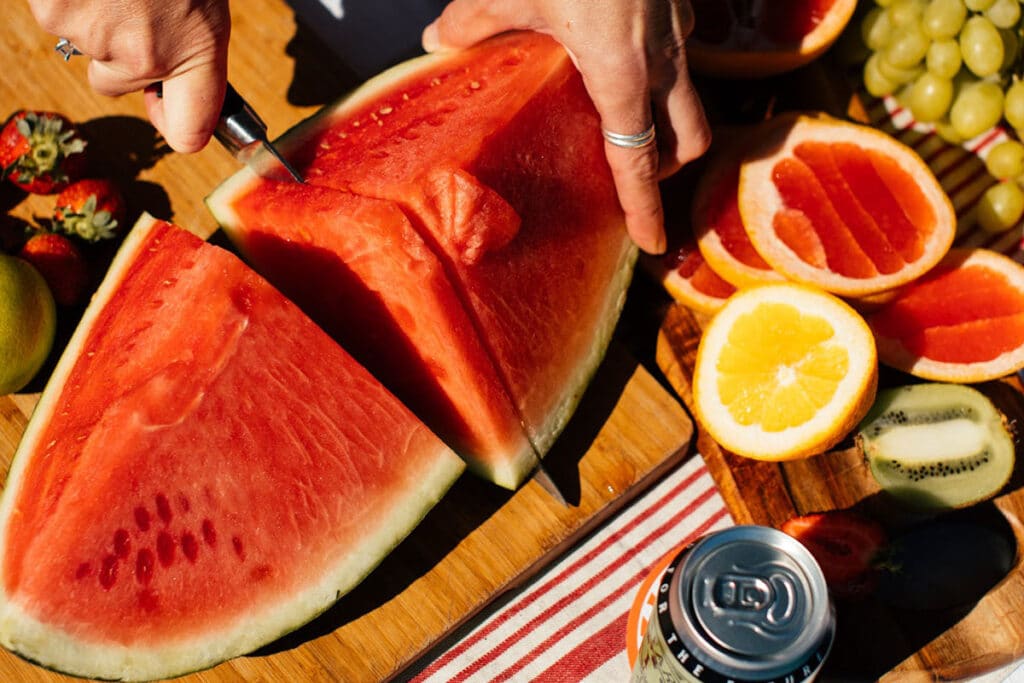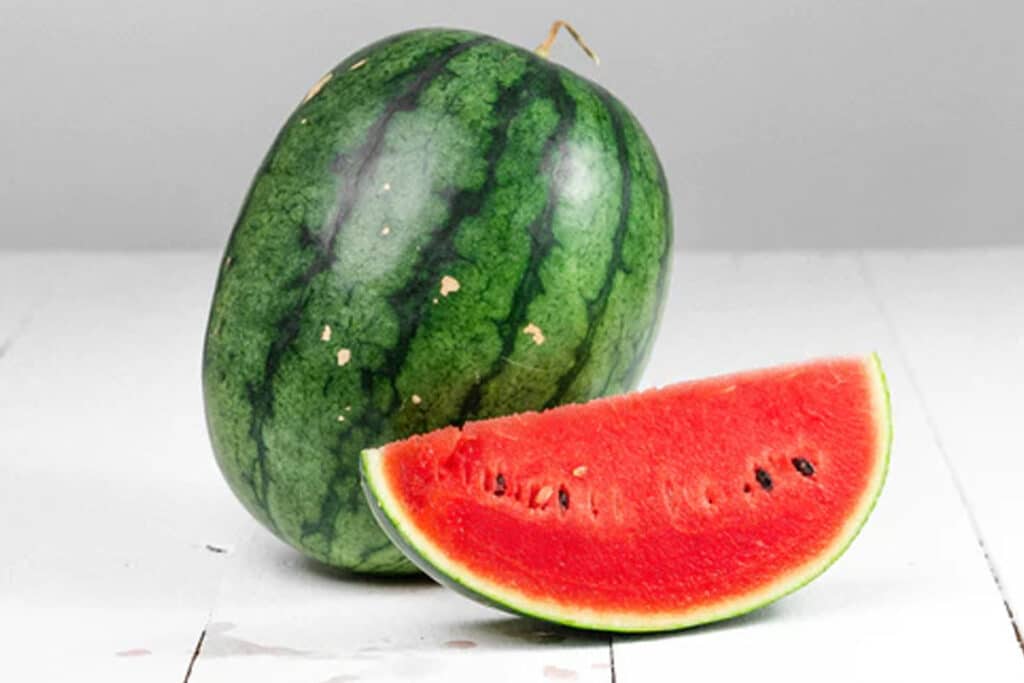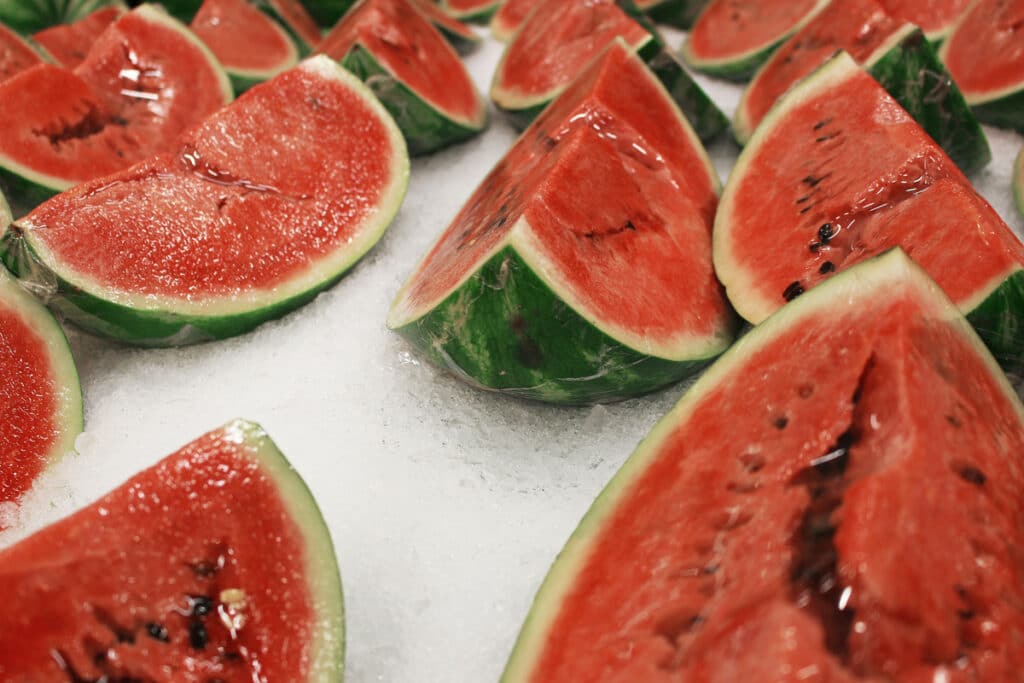
Watermelon is one of the most popular fruits grown in tropical and non-tropical countries. There are dozens of varieties, ranging from small ones weighing about a pound to huge ones weighing up to 20 pounds at their maximum. Watermelons are generally sweet and juicy, and have a bunch of uses.
In many stores, watermelons are sold whole. If you buy a whole watermelon, you might not be able to consume it all at once, and you might be wondering will it go bad before I have time to consume it?
Well, continue reading below for the answer to that question and much more.
Does Watermelon Go Bad?
Like all other fruits, watermelon will go bad in a short period. Pre-cut watermelon slices sold in delis and grocery stores will spoil quicker than whole uncut watermelon. Usually these come with a best by date which is generally accurate.
Whole watermelon will last a lot longer, especially if storage conditions are ideal. To prolong the lifespan of a ripe watermelon, it’s recommended that you keep the fruit whole and cut it when you’re ready to eat.
How To Tell Watermelon is Bad/Spoiled?

An expert at watermelons will be able to tell when it’s spoilt just by looking at it. For the non-experts among us, there are a combination of checks that we can use to safely determine if watermelon is edible or if it needs to be tossed. Check these out below.
The Smell Check
Depending on how advanced the spoilage process is, you should be able to tell that the watermelon is bad just by the smell. Fresh edible watermelon doesn’t have much of a scent, so if you detect any bad odor, or vinegar-like smell, then that watermelon needs to be thrown out.
The Taste Test
While this should probably be your last resort, it’s usually the most foolproof way to determine edibility. Watermelon, regardless of the variety, usually has a sweet fresh taste, complemented by the fruit’s juicy flesh. If the fruit tastes sour, then it’s gone off.
The Color Test
The common watermelon that’s sold worldwide has a green outer skin that has differing shades in a stripe pattern. Any major deviations or inconsistency in the pattern is a sign that the melon might not be edible any more.
When it comes to the inside of the fruit, color is also an indication of spoilage. Common watermelons are pink to red on the inside, while some varieties are yellow to slightly orange. Any darkening or greenness on the inside of the fruit is a sign that it’s gone bad.
Appearance
In addition to color changes, the overall appearance of watermelon changes when it is spoilt.
One of the first major changes in appearance are dark spots or mold growing on the outer skin of the fruit. Another outer change that indicates spoilage is shriveling or drying up. When you cut the watermelon if the fruit appears slimy or mushy on the inside, that’s also a clear signal it’s not safe for consumption.
Does Watermelon Need to be Refrigerated?

Once you cut the watermelon open, then refrigeration is a great way to preserve it and keep it fresh. If you buy sliced watermelon in a package from the supermarket, you should refrigerate it as soon as possible as it won’t last more than a few hours at room temperature.
How Long Does Watermelon Last?
A whole watermelon fresh from the field or store, will last between seven to 10 days at room temperature. Placing it in the refrigerator (uncut) will extend the lifespan by about 5 days to a week.
Watermelon slices or freshly cut watermelon that’s placed in the refrigerator will stay fresh for about 3 days.
To lengthen the lifespan of watermelon past two weeks, you can choose various means of storage. See a few examples below.
Best Ways to Store Watermelon So It Doesn’t Go Bad

The refrigerator is always a great means of storage. Before you place your sliced fruit into the refrigerator however, you should wrap them in plastic or place them ito an airtight container. This will ensure the fruit is kept fresh land crisp.
Freezing
If you won’t be able to consume the fruit within a week, then freezing the watermelon is an option to consider. Frozen watermelon once thawed will lose its crispness and can become mushy, so you might not want to eat it as is. It is however perfect for smoothies and blended juices.
Dehydrating
If you have a ton of watermelon on hand and want to preserve it for a long time, then drying is a great option. Fruits that have a high water content will spoil quicker than those that don’t. Using a dehydrator to remove water from the watermelon will prolong its shelf life by several weeks. Remove the rind from the melon before or after dehydration and serve the pieces as a snack.
Pickling
This is another great method, although it’s not popular in the western work. In Russia pickled melon is extremely popular. While the fruit can be pickled with the rind still attached to slices, you can cut them off beforehand if that’s what you prefer. Pickled melon incorporates sugar, lemon juice and a bunch of spices.
The process is similar to any other pickled products, place the cut fruit into mason jars. Boil the pickling liquid along with spices. Then pour the liquid over the fruit and seal the jars, before letting them cook down.
Jelly
Another fun way to preserve watermelon is by making it into jelly. For this process you’ll need to remove the juice from the fruit using a juicer or blender, then place the juice in a saucepan and bring to a boil. Reduce the heat and allow the juice to simmer until it gets thick. Add sweetener and pectin as needed.
Risks of Consuming Spoiled Watermelon
Fatigue, headache, nausea , vomiting and diarrhea are just some of the symptoms that you could suffer from if you’ve had spoilt melon.
Wrapping it up
If you want to preserve watermelon; there are several ways to do so.
Before you preserve, you should make sure to look for the signs of spoilage that we discussed above.